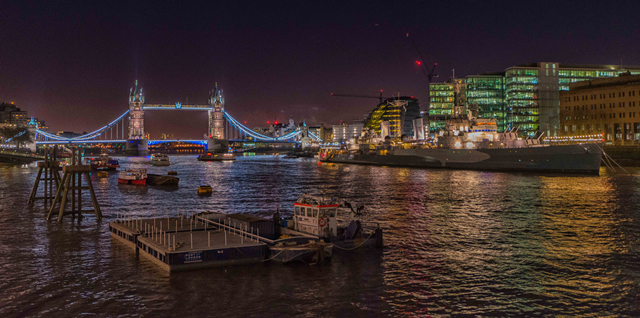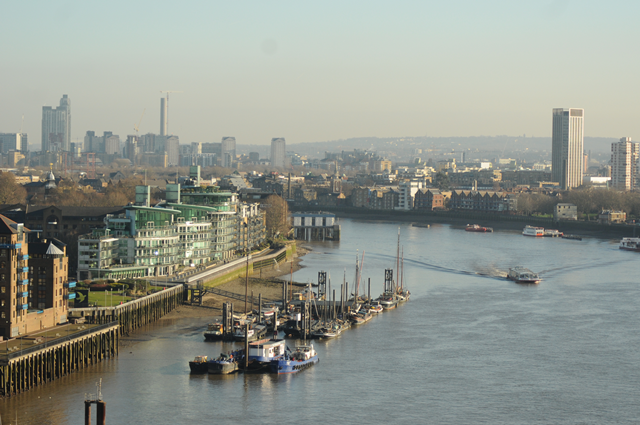28.11.2016
Success of London has planning professionals looking to the Thames
The river at the heart of the community
 Members of Future of London, the capital’s leading regeneration, housing, infrastructure and economic development network, took to the Thames recently to discuss how the river can add the greatest value for communities.
Members of Future of London, the capital’s leading regeneration, housing, infrastructure and economic development network, took to the Thames recently to discuss how the river can add the greatest value for communities.
The Thames made London the greatest trading hub in the world, but is so much more now, according to Robin Mortimer, chief executive at the Port of London Authority, who spoke to the Future of London group on board the passenger boat MV Edwardian. He said:
“The tidal Thames is the watersports capital of Britain, with 5,800 people rowing on it each year, and over 100 paddling, rowing and sailing clubs. It is the busiest inland waterway, with 10m passengers travelling on the river each year, and a record 5.5m tonnes (550,000 lorries) of inland freight moved in 2014.”
As the group heads up river, the variety of uses is clear. Tucked away beneath a riverside office block is Walbrook Wharf, where some of London’s household waste is transferred in metal containers, and barged down stream to an energy-from-waste plant, powering local homes.
 Next the boat passes a series of brightly lit apartments, cafés and restaurants with people enjoying a riverside stroll on the mild autumn evening.
Next the boat passes a series of brightly lit apartments, cafés and restaurants with people enjoying a riverside stroll on the mild autumn evening.
Just beyond the cafés and in front of world-leading tourist destinations including the Tower of London, is Tower Pier, bustling with commuters and smartly dressed young people piling onto what looks to be a floating nightclub.
Mortimer told the group: “There are excellent examples of connecting communities to the river, such as at Battersea Power Station, where 20,000 homes are being built alongside the provision of a new riverbus service and Fulham Reach, where the community now benefits from an excellent new watersports facility as part of the housing development.
“We know the city is growing, particularly to the east and as new communities are planned and regeneration takes place, we should consider the role of the river in creating places that work - for living, for transport, for travel, and for leisure time too.”
Future of London chief executive Lisa Taylor agreed: “The Thames is the lifeline of the capital, and can affect values, logistics and communities along the river and farther afield. As the PLA fine-tunes its Thames Vision, it’s immensely helpful for them to open a dialogue with Future of London members on getting the most from the river.”
Ken Baikie, director, Thamesmead regeneration at Peabody, said: “We are delivering 2,700 new homes, offices and shops in Thamesmead, and are working with the PLA and others to use the opportunities brought by the river. Together with the planned DLR crossing, improved access to the Thames Path and an extension of the Thames Clipper commuter service to Thamesmead will help us deliver an additional 11,500 homes, attract new investment to the area and boost the local economy. Peabody and partners want to make the most of the 5 km of river frontage, so that Thamesmead can finally fulfil its potential as London's new town.”
As the Q&A wrapped up, guests enjoyed the unique magic of the Thames at night, gliding past highlights of the city’s buzzing evening economy, and between historic and modern architecture transformed by artistic light displays. The issues around river uses aren’t always clear-cut, but the discussion will continue.
ENDS
Contact
Tom Conroy, Communications Manager - 07951 748904 or [email protected]
Notes:
Port of London
- The PLA works to ensure navigational safety along the tidal Thames, sharing its marine, environmental, planning and other expertise to promote use of the river and safeguard its unique marine environment.
-
The tidal Thames is one of the UK’s busiest waterspaces and is home to:
- the country’s second biggest port by tonnage of goods handled;
- busiest inland waterway for passengers and freight;
- centres of sporting excellence; and
- events including the University Boat Race, Great River Race and Tall Ship festivals.
Thames Vision
The Thames Vision is looking to the transformational potential of new developments by linking new communities with the river through:
- Riverbus services at purpose built piers with modern facilities, bringing the opportunities for these new communities to be destinations for visitors. For example allowing people to take advantage of new cultural offers (such as the first Estuary Festival, which took place this year).
- Access to the Thames path to connect residents with the other Thames communities, culture, heritage, history and environment. For example, providing access to potential eco and heritage tourism at Rainham and Mucking.
- Marinas to be included in new developments, thereby bringing sport and leisure opportunities as well as adding life and interest to the waterfront of new developments.
- Watersports clubs to help communities be healthy and active and make the most of the ‘blue park’ on their doorstep. Section 106 funds can be used to support this.
For full details of the Thames Vision Visit: http://www.pla.co.uk/assets/thevisionforthetidalthames.pdf

